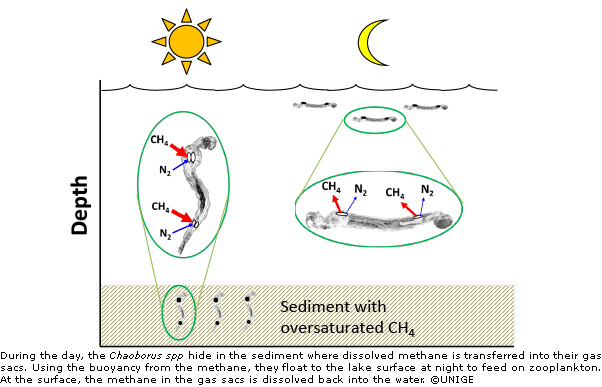Greenhouse gases: First it was cows — now it’s larvae!

The fly larvae Chaoborus spp. utilize methane in lake sediments to propel themselves. The larvae live in the sediment, and migrate to the surface to feed at night via this “gas lift”, saving substantial energy. Consequently, they liberate this important greenhouse gas to the surface water, in contact with the atmosphere.
For more information, please contact Professor Daniel McGinnis
McGinnis, D. F.; Flury, S.; Tang, K. W.; Grossart, H.-P., Porewater methane transport within the gas vesicles of diurnally migrating Chaoborus spp.: An energetic advantage. Scientific Reports 2017, 7, 44478.
23 Mar 2017